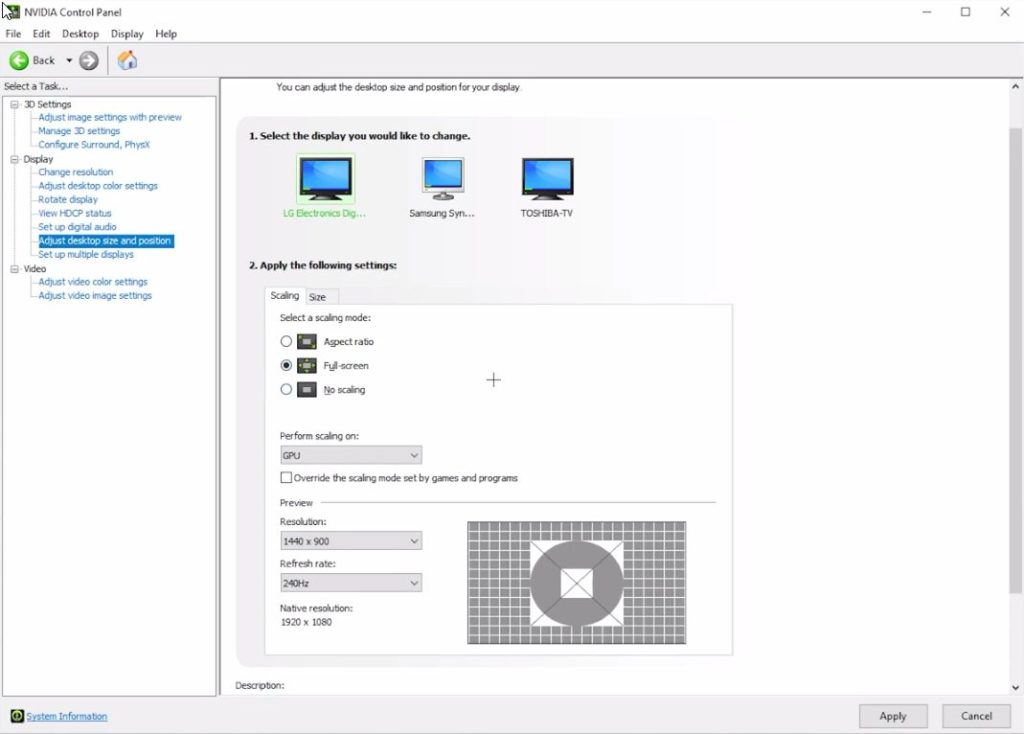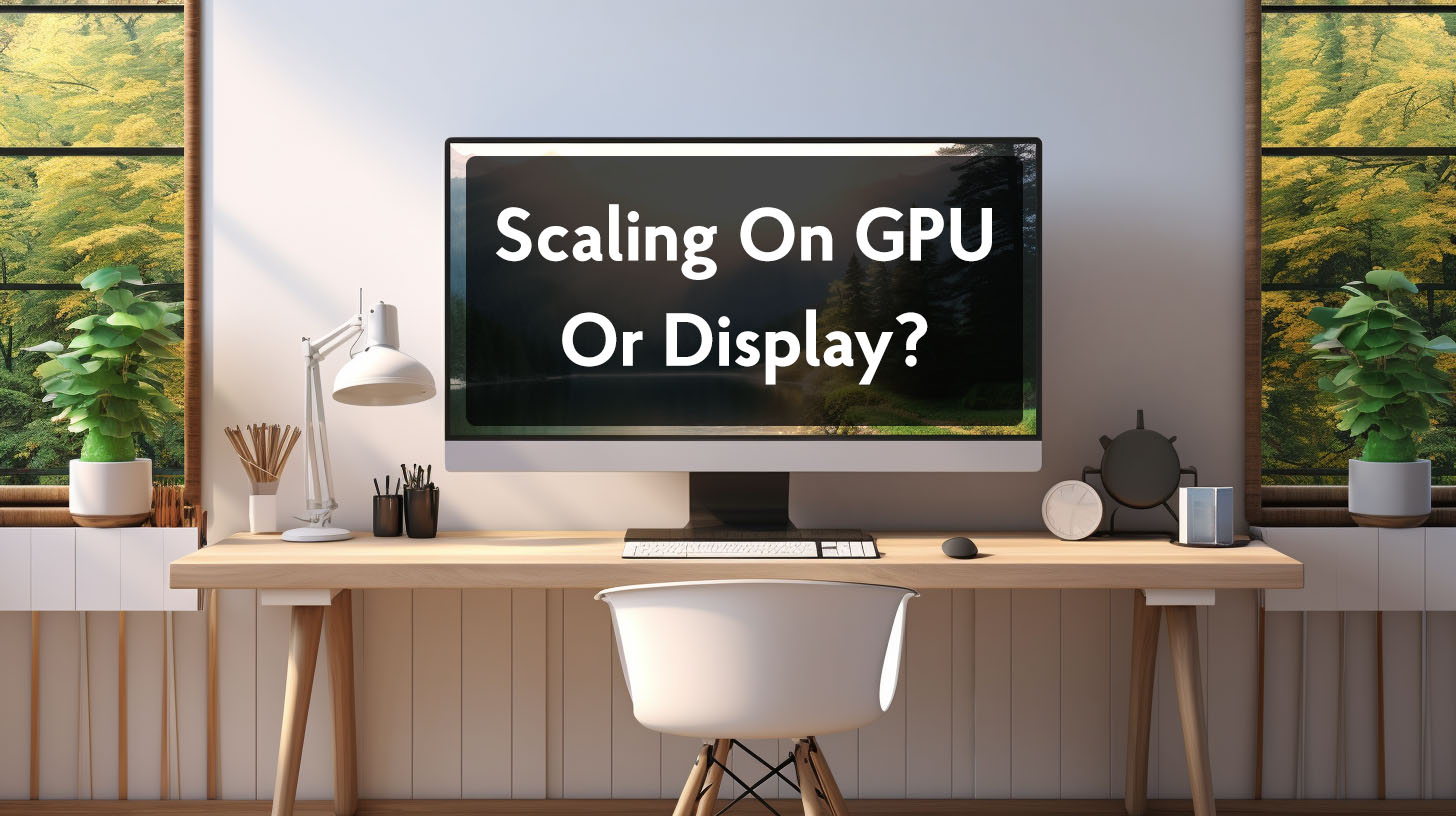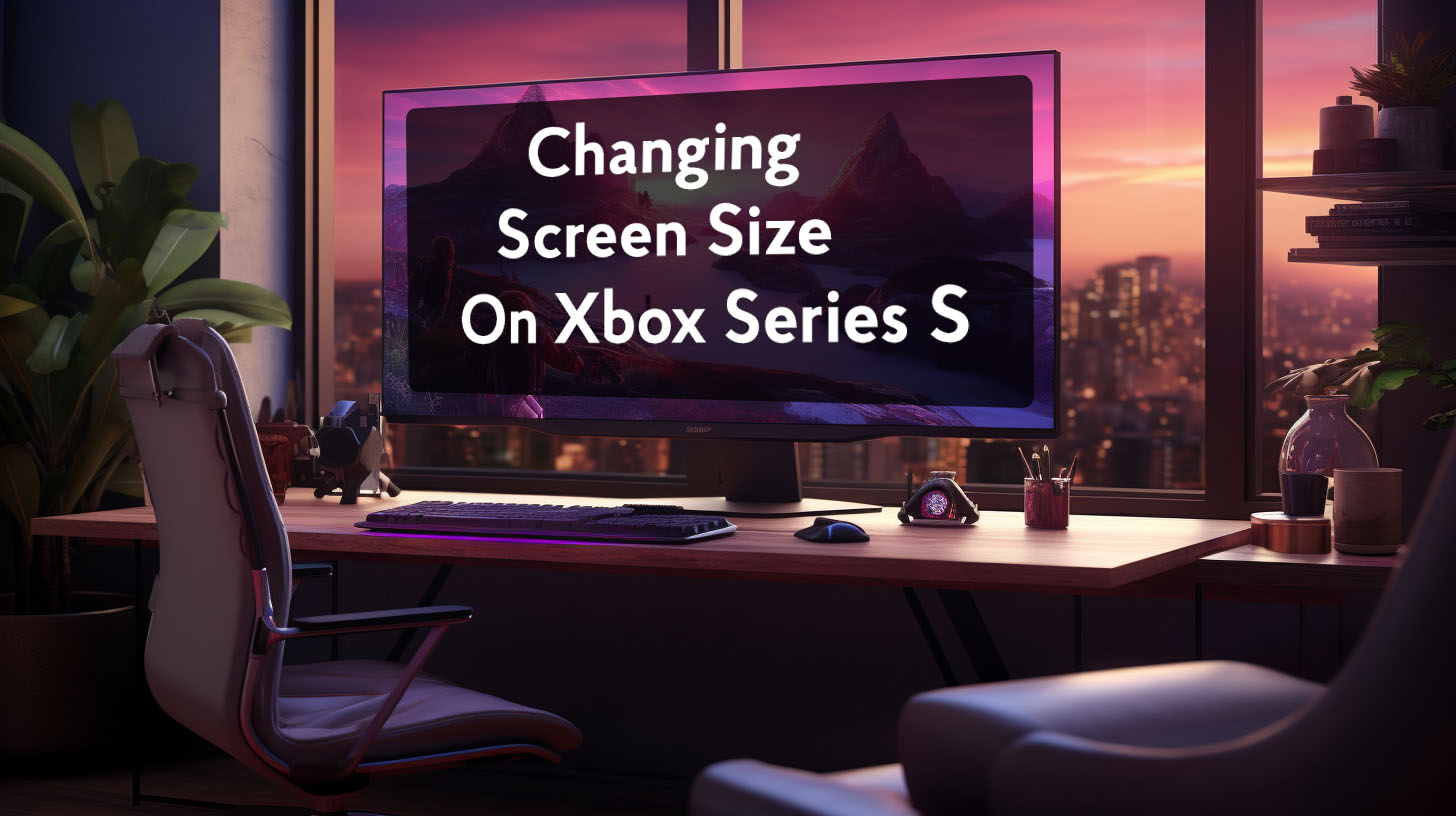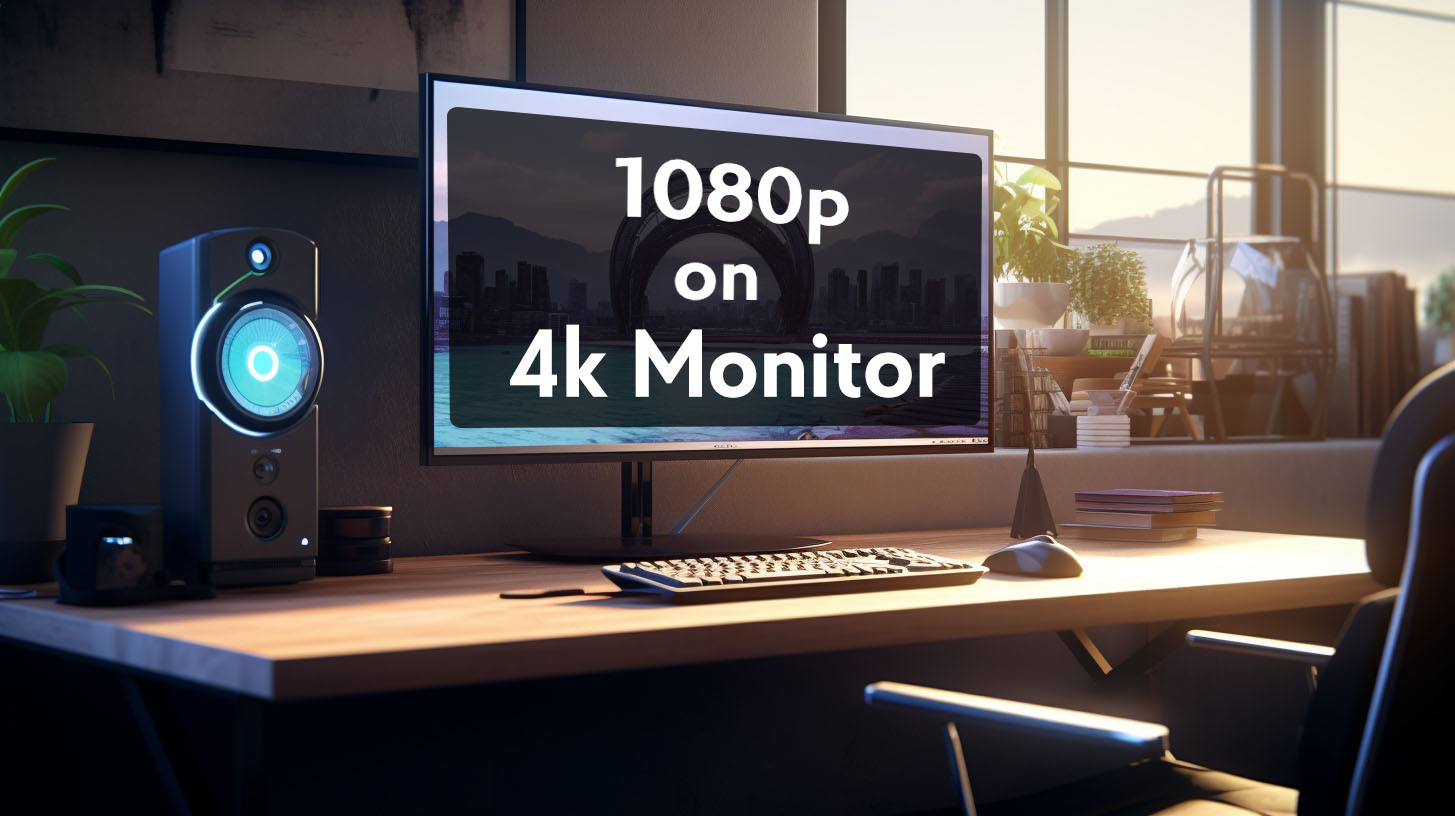When playing games on a PC, the image displayed on-screen may need to be scaled from the rendered resolution to match the native resolution of the monitor. Scaling becomes crucial for optimizing visual quality and performance when running games at non-native resolutions. There has been extensive debate around whether it is better to use GPU or display scaling for the best experience.
Input Lag Differences
Perceived Lag
Some claim that display scaling results in lower input lag compared to GPU scaling. However, the difference is likely extremely small, perhaps 1ms or less according to some discussions. This miniscule difference would be imperceptible to most people during real-world gameplay.
 While some report feeling like display scaling is more responsive, it is difficult to quantify and may come down to subjective perception. Blind testing could help determine if perceived differences are real or placebo.
While some report feeling like display scaling is more responsive, it is difficult to quantify and may come down to subjective perception. Blind testing could help determine if perceived differences are real or placebo.
Monitor Dependency
Input lag can also depend on the specific monitor and its built-in scaler. Some monitors have higher quality scalers that optimize processing time. One user pointed out that input lag comparisons between GPU and display scaling should consider the specific monitor used.
It is hard to make universal claims that would apply equally across all monitors and setups. Display scaling performance can vary widely between different monitor models.
Smoothness and Consistency
GPU Scaling
GPU scaling can provide a smoother, more consistent gameplay experience in terms of frame pacing and frame times. By handling the scaling process, the GPU optimizes the rendering pipeline for lower hitching or stuttering during gameplay. Users report that GPU scaling eliminates frame drops and stutters that occur with display scaling. The results can be more fluid motion, even if display scaling has a slight input lag advantage.
Display Scaling
Display scaling can sometimes introduce microstutters or frame time inconsistencies according to some users, leading to a less smooth experience. While it may feel marginally more responsive at very high framerates, lower end hardware may benefit more from the stability and smoothness of GPU scaling.
Resolution Considerations
Native Resolution
When gaming at the native resolution of a monitor, such as 1920×1080 on a 1080p display, scaling is not needed. In this case, the choice of GPU or display scaling makes no difference as no scaling is taking place. Users confirm that scaling method does not matter when gaming at native resolutions.
Non-Native Resolution
However, when running at a non-native resolution, like 1440p on a 1080p monitor, the scaling method becomes crucial. The GPU and monitor handle scaling differently, impacting factors like image quality, input lag, and frame pacing. Testing both is recommended when playing at non-native resolutions to see which provides the best experience.
Image Quality Differences
Image quality can vary between GPU and display scaling depending on monitor model, GPU settings, and other factors according to discussions. GPU scaling provides consistent results across different GPUs. But display scaling quality depends on the monitor and can be inconsistent. Neither has definitively superior image quality universally, so personal evaluation is recommended to choose the best option for a given setup.
Mouse Feel and Fullscreen Experience
Mouse Sensitivity
Many users report noticeable differences in mouse sensitivity and control between GPU scaling and display scaling. With display scaling, some find the mouse movement becomes more sensitive and harder to precisely control.
The mouse feels like it moves faster than their hand motions, making aim more difficult. Users specifically mention games like Overwatch 2, VALORANT, and APEX Legends feeling too sensitive. In contrast, GPU scaling provides a more consistent, controllable feel.
The mouse seems to better track with on-screen movements. One user described it as feeling like the mouse is gently guided at all times.
Fullscreen vs No Scaling
At a native resolution like 1080p, some users still notice differences in aiming and feel when switching between fullscreen scaling and no scaling. While both use GPU scaling, the experience isn’t identical for some people.
Users report fullscreen feels significantly better for aim than no scaling, which feels erratic and overly sensitive. Reasons are unclear, but it shows scaling settings can impact factors beyond just input lag. More research is needed to understand these aiming differences at native resolutions when no actual scaling is occurring.
Compatibility and Overriding
G-Sync Compatibility
For variable refresh rate monitors like G-Sync, GPU scaling is strongly recommended over display scaling by users. GPU scaling integrates tightly with G-Sync, helping manage frame pacing and syncing for a smoother experience. Display scaling can potentially disrupt G-Sync synchronization, making GPU scaling far preferable for these monitors according to first-hand accounts.
Scaling Method Overriding
Some users report display scaling gets overridden to GPU scaling regardless of Nvidia control panel settings. Even with display scaling enabled, the monitor behaves as if GPU scaling is occurring.
This is likely due to compatibility issues between certain resolutions and specs of the monitor’s EDID. So GPU scaling may be forced on unintentionally, explaining odd scaling experiences users notice. There are ways to check and potentially force true display scaling, but issues persist.
Additional Factors
Integer Scaling and Sharpening Effects
GPU scaling unlocks exclusive features like integer scaling for pixel perfect old game display and sharpening effects through Nvidia Image Scaling (NIS). Display scaling lacks these customizations, giving GPU scaling added value for usability according to users. One specifically cited integer scaling as a key reason for upgrading their GPU.
Performance Overhead
Display scaling utilizes monitor hardware for processing, avoiding GPU resource usage. But GPU scaling requires a small amount of GPU overhead. However, multiple users point out modern GPUs handle scaling so efficiently that this overhead is negligible even for lower end cards. Some estimate under 1ms of difference for GPU scaling latency.
Game Dependency
Observed differences between GPU and display scaling vary across games according to user reports. The impact depends on game engine and system factors. For example, users cite Battlefield 4 stuttering with display scaling while perfectly smooth under GPU scaling. So there is no universal consensus on which scaling method performs better for all games and scenarios.
Conclusion
The GPU versus display scaling debate has raged on for years without a definitive conclusion. Each has situational advantages and downsides. With new monitor technology and modern GPUs closing the gap, differences are often imperceptible outside of subjective perception.
Personal testing and preference ultimately determines the best scaling method for a given gaming setup and use case. There is no universally superior choice, as multiple discussions demonstrate.




